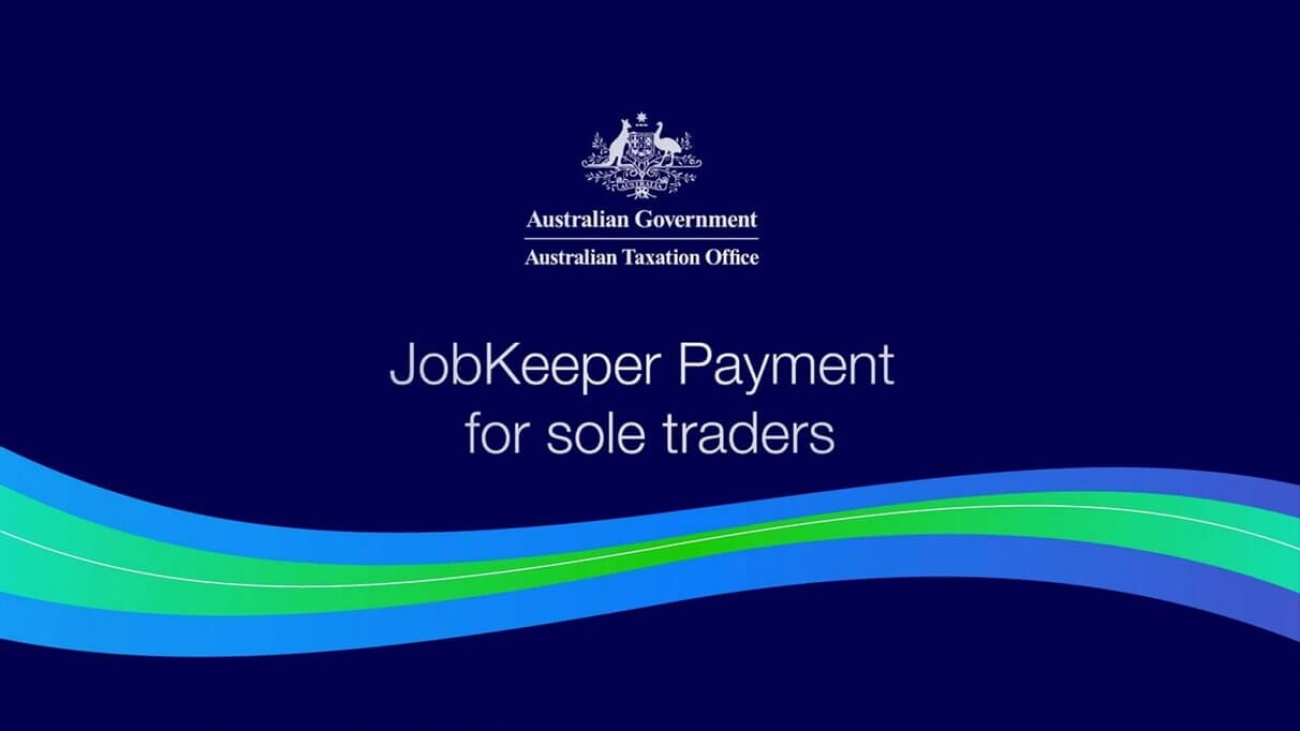Jobkeeper
On 30 March 2020, the Australian Government announced a new JobKeeper Payment for eligible businesses, to help them retain employees during the COVID-19 crisis and recover quickly afterwards.
On Saturday 2nd May 2020, the ATO released the employer declaration form. If you are already registered, you need to make the declaration to be entitled to a payment. If you are not already registered, you can register and make the declaration.
We summarised below questions and answers as related to the Jobkeeper payment.
Which small businesses are eligible for the JobKeeper Payment?
Australian businesses that are structured as companies, partnerships, trusts and sole traders, as well as not-for-profit entities and charities, are eligible if they meet the following criteria:
- their business turnover is less than $1 billion and it will be reduced by more than 30 per cent compared to a period (of at least a month) a year ago and the business is not subject to the Major Bank Levy
- turnover will be defined according to the current calculation for GST purposes and is reported on Business Activity Statements (BAS)
- if the business was not operating a year ago, or if turnover a year earlier was not representative of their usual or average turnover, the Tax Commissioner will have discretion to consider additional information that establishes the business has been adversely affected
eligible employees must have been employed by them as at 1 March 2020 and be currently engaged.
Eligible businesses must register online with the ATO for the JobKeeper Payment on behalf of their nominated employees (including themselves) and provide monthly updates to the ATO. To register, click here.
Which employees can receive the payment?
- Employees must be an Australian citizen, holder of a permanent visa, a Protected Special Category Visa Holder, a non-protected Special Category Visa Holder who has been residing continually in Australia for 10 years or more, or a Special Category (Subclass 444) Visa Holder.
- The payment is available for full-time, part-time or long-term casual employees (a casual employed on a regular basis for longer than 12 months as at 1 March 2020) who is 16 years or over.
- They cannot be receiving the JobKeeper Payment from another employer.
- It may affect their eligibility for other Services Australia payments as the JobKeeper Payment is to be reported as income.
Businesses can claim the JobKeeper Payment for employees that stood down after 1 March 2020. To be eligible in relation to these employees, you will need to pay them a minimum of $1500 per fortnight (before tax) for the payment periods of the JobKeeper Payment. The first payment period is from 30 March 2020 to 12 April 2020.
How much is the payment and when will we receive it?
The JobKeeper Payment is $1,500 per fortnight per eligible employee for a maximum of 6 months.
Initial payments are expected to be made in the first week of May, backdated to 30 March.
If a business does not meet the turnover test at the start of the JobKeeper program on 30 March 2020, they may start receiving the JobKeeper Payment later, once the turnover test has been met. In this case, the payment is not backdated to the start of the scheme.
Businesses can receive JobKeeper Payments until 27 September 2020.
What if I am self-employed?
Sole traders are eligible for the JobKeeper Payment but must meet certain eligibility criteria. Other eligible businesses can nominate only one working director, partner, beneficiary or shareholder, as well as, any eligible employees.
People who are self-employed will need to provide a monthly update to the ATO to declare their continued eligibility for the payments. Payment will be made monthly to the individual’s bank account.
Do I need to top up my employee’s pay?
If an employee usually earns more than the JobKeeper Payment ($1,500 a fortnight) the employer is expected to top up their wage payment and pay superannuation as normal. Employers will be legally obliged to pass the $1,500 payments in full to their employees. The ATO has provided the following examples:
- If an employee ordinarily receives $1,500 or more in income per fortnight before tax, they will continue to receive their regular income from their employer according to their workplace arrangements. The JobKeeper Payment acts as a subsidy.
- If an employee ordinarily receives less than $1,500 in income per fortnight before tax, their employer must pay their employee a minimum of $1,500 per fortnight, before tax.
- If an employee has been stood down, their employer must pay them at a minimum, $1,500 per fortnight before tax.
- If an employee was employed on 1 March 2020, subsequently ceased employment with their employer, and then was re-engaged by the same eligible employer, they will receive a minimum of $1,500 per fortnight, before tax.
Seek advice from an HR professional and accountant for specific advice on payments to your employees.
Am I required to pay PAYG withholding and superannuation on the JobKeeper Payment?
You must pay a minimum of $1,500 (before tax) per fortnight to your eligible employees, withholding income tax as appropriate. If an employee is paid more than $1,500 per fortnight, your superannuation obligations will not change.
Where an employee is having their wages topped up to $1,500 per fortnight by the JobKeeper Payment, it will be up to the employer if they want to pay superannuation on any additional wages paid by the JobKeeper Payment.
You cannot use the $1,500 per fortnight towards superannuation contributions.
Key steps to take now to receive the first round of payments
The ATO has advised that you’ll need to meet the following criteria in order to receive the first round of JobKeeper Payments (due during the first week of May):
- Have paid eligible employees a minimum of $1,500 per fortnight (before tax) for the period between 30 March and the end of April. NB: The first two fortnights payments need to be made by the end of April to receive JobKeeper Payments in the first week of May. (You cannot pay your employees less than $1,500 per fortnight and keep the difference.)
- Meet the eligibility requirements outlined by the ATO. For detailed eligibility criteria outlined by ATO, click here.
- Have enrolled in the JobKeeper program when enrolments open on 20 April 2020.
Please note: The ATO has announced an extension to the deadline to pay eligible employees’ wages for April. If you pay your employees by 8 May you will also be eligible to claim JobKeeper Payments for the two pay fortnights in April.
As of 24 April, the time to enrol for the initial JobKeeper periods was extended from 30 April 2020 until 31 May 2020.
If you enrol by 31 May you will still be able to claim for the fortnights in April and May, provided you meet all the eligibility requirements for each of those fortnights. This includes having paid your employees by the appropriate date for each fortnight.
You can enrol and claim for a JobKeeper earlier if you choose. For example, you can enrol by the end of April to claim JobKeeper payments for the two fortnights in April.
What can I do if I don’t have the funds to pay wages before receiving the JobKeeper Payment?
If your revenue has been affected and you’re unable to pay your staff, we’ve outlined four options available to help you manage your cash flow when claiming JobKeeper Payments.
Most Australian banks have agreed to prioritise applications from businesses needing funding to bridge the gap until the first JobKeeper Payments are made in May. Each bank has set up a dedicated hotline to help manage the applications from businesses and will bring JobKeeper related applications to the front of the queue. The contacts for each bank are:
- ANZ – 1800 571 123
- Commonwealth Bank – 13 26 07
- NAB JobKeeper Helpline – 1800 562 533
- Westpac JobKeeper Helpline – 1300 731 073
- St George – 1300 730 196
- Bank SA – 1300 669 472
- Bank of Melbourne – 1300 784 873
JobKeeper vs JobSeeker Payments
Some people who have lost work during COVID-19 may have already applied for the new expanded JobSeeker Payment (with coronavirus supplement) via Centrelink/Services Australia.
If these people subsequently become eligible for JobKeeper Payment and are advised by their employer that they have been nominated (employers are required to advise employees of this) they should notify Services Australia via the JobKeeper employee nomination notice and report their JobKeeper Payment as income. The payment may affect income support payments.
The JobKeeper Payment is not subject to partner asset tests, unlike the JobSeeker Payment.


